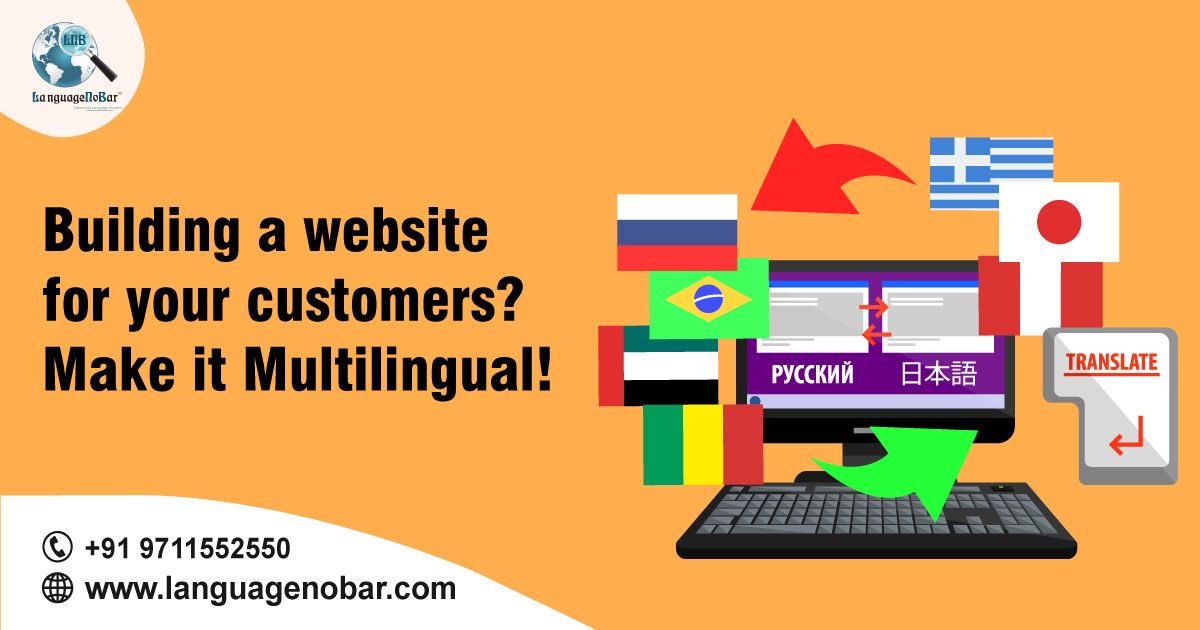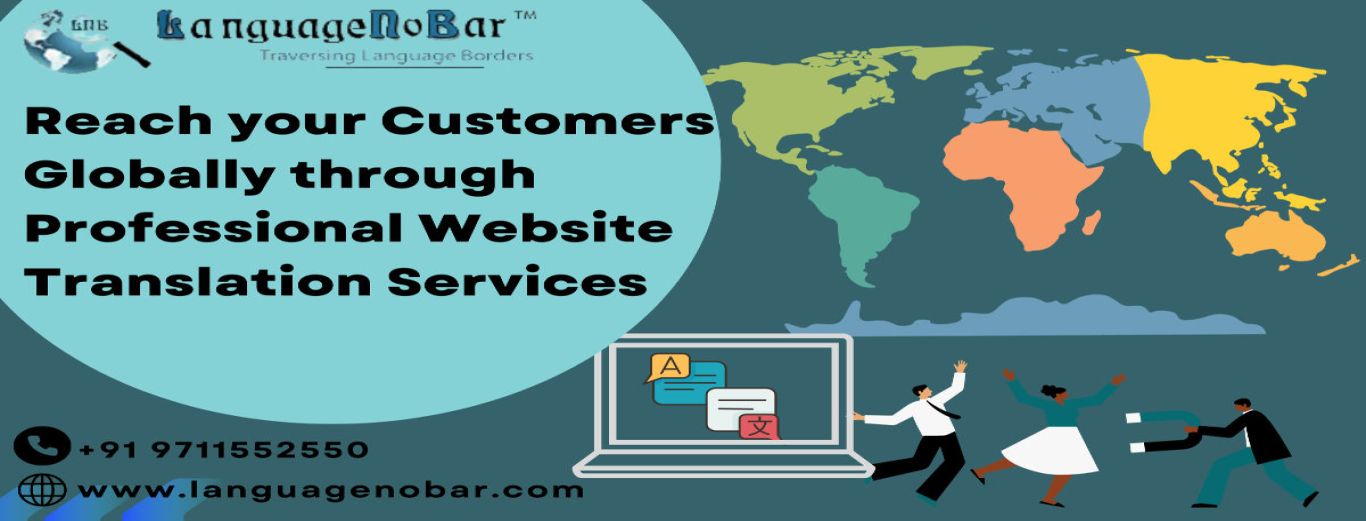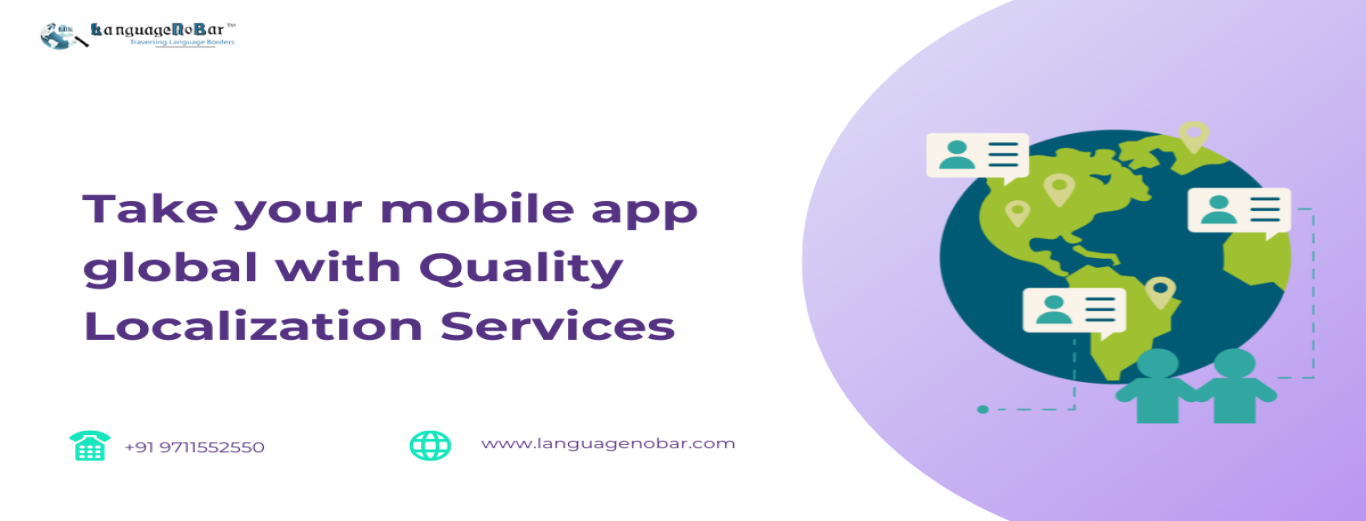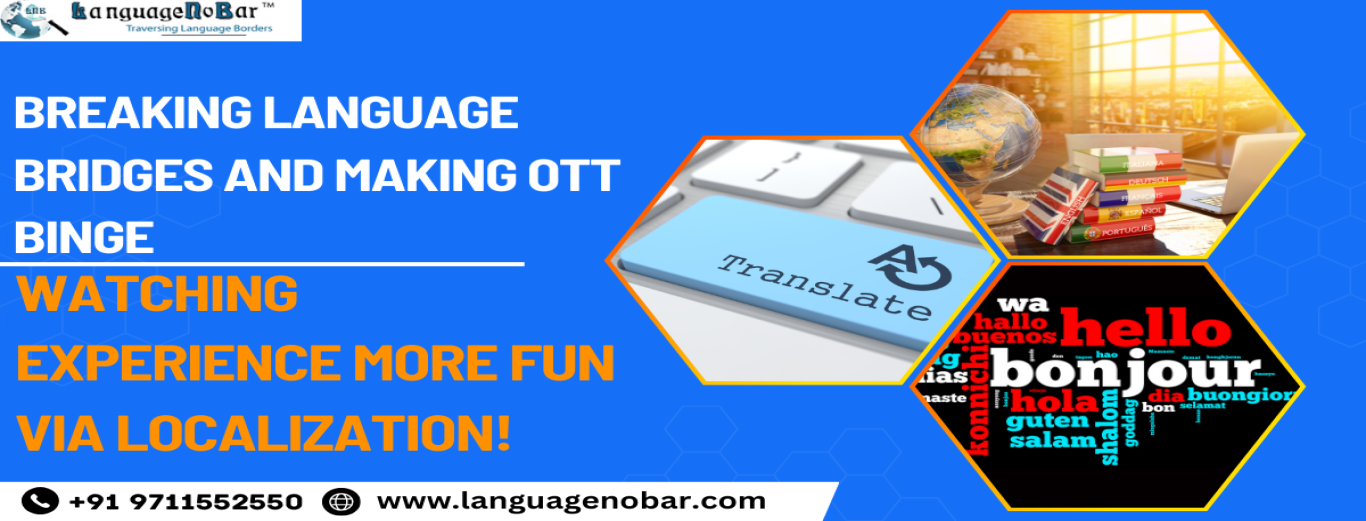Building a website for your customers? Make it multi-lingual
- App Localization Testing Services
- Comments (0)
A Website is available to everyone, anywhere, at any time. Customers may access your website and enjoy your services or obtain the information they require even during non-business hours, which is one of the most important aspects of having a business website. The website is constantly in operation to guarantee that clients receive the information they require from the comfort of their own homes.
In today's digital age, the efficiency of your website for potential clients is more vital than ever. Because a rising amount of customers use your website as their initial point of contact with your company, getting this right is crucial not only for securing a sale but also for maintaining a long-term relationship with your customers and developing a high level of brand loyalty. A website meant for North India, for instance, would need English to Hindi translation.
A multilingual website expands on your original efforts by allowing businesses to connect with clients in diverse regions in a more personalized manner. When done correctly, a multilingual website can be great for providing an excellent user experience to all of your consumers throughout the world it is one with the material in two or more languages. Most of the time, this relates to written content, such as main site pages, essays, and case studies. Other sorts of the material may be available on multilingual websites, such as mixed-media – films, webinars, infographics, e-courses, social media, and more — in multiple languages.
While surfing through a website, question pops out “Do you know how to speak any of these languages? If not, please take our heartfelt apologies."
Consider the frustration of an irritated customer having to convey their problem in a language they don't understand and then trying to understand what the customer care person is saying. Being forced to speak in a language you're not completely comfortable with creates an unpleasant customer experience, regardless of how amazing your product, service, or after-purchase assistance is. Accordingly, professional website translation services are imperative for businesses to go global and gain customers’ interest.
If you speak one of the languages listed at the top, you could have smiled upon seeing a familiar tongue. When your website speak their language, you give them that feeling.
In today's world of cutthroat competition, the greatest approach to differentiate your company is to provide a positive customer experience. Businesses are becoming more customer-centric, and consumers and businesses are constantly raising the bar in terms of customer experience.
By assisting consumers in their own language, you are not only removing an impediment but also making them feel welcome. This is a significant advantage for you because, more often than not, purchasing is an emotional decision as well as a logical one.
When you speak your customer's language, you instantly establish a relationship. Customers apparently trust websites that offer services in their language more than those that do not. As such, it goes without saying that a website targeted for Japan should be in Japanese and the one targeted for Russia should be deployed in Russian through quality Russian translation services.
That extra effort you put in to create a multilingual website, product, and after-sales assistance demonstrates that you have given your customers a lot of thought and care. As with any commercial transaction, if the customer believes you care, they will want to do business with you.
Tips to Create an Engaging Multilingual Website
- Choose the pages to offer in each language strategically. Keep in mind that not all content must be translated. For example, do you intend to sell only certain items or services to a specified market? Then, in that language, consider translating simply the text intended to promote interest in those products or services.
- Consider how to show your language selections. Ideally, you should make it simple for users to understand that you speak their language. And the methods to obtain the content in their preferred language should be simple and intuitive.
- Look for novel ways to localize your content. Creating a multilingual website is only the first step toward providing a local brand experience to your target consumers. But don't lose sight of the fundamental goal: engaging with your customers. This could imply emphasizing different components of your brand on your multilingual web pages.
- A multilingual website is at the heart of this customer-centric approach, as the degree of customization that a business can provide becomes an increasingly significant aspect in securing clients and sales.
If you can give great content in your website visitors' native language, they will feel recognized and appreciated, especially if this is not usual among your competition.
We now live in a global commercial context where cross-border e-commerce is changing the way customers spend and how organizations respond to these behavioral developments.
Having a multilingual website is no longer a monumental endeavor and can be accomplished seamlessly with the proper solution. Take your company to the next level by translating and expanding - you won't be sorry.
At Languagenobar - A leading translation company, we ensure the best translation with 150+ language options. Trust us with the highest quality translation services with experienced subject matter expert native translators.
Related Blog :
HOW TO GET QUALITY TRANSLATION SERVICES WITHIN YOUR BUDGET
AVOIDING THE LABELING DISASTERS OF BEAUTY PRODUCT TRANSLATIONS
MARKET RESEARCH TRANSLATIONS – THINGS YOU NEED TO KNOW!







